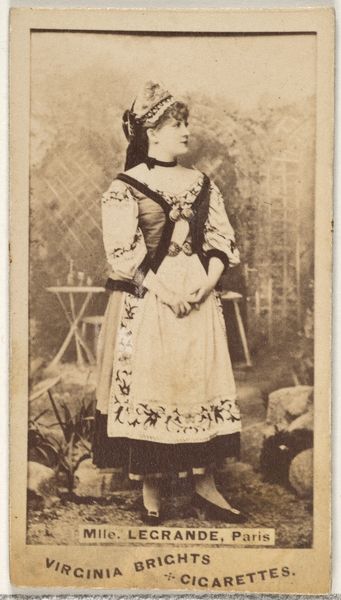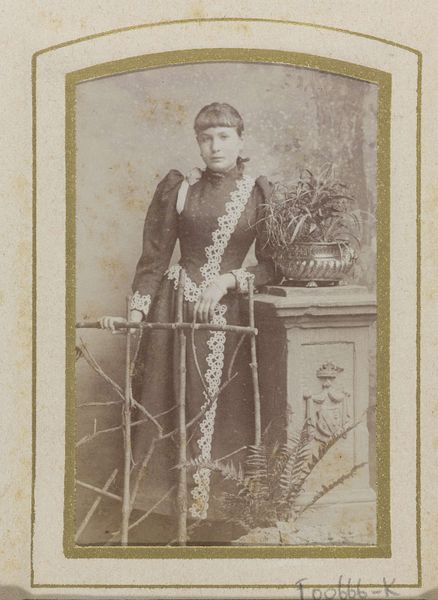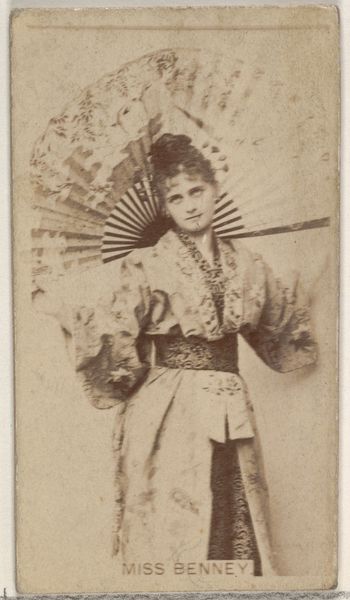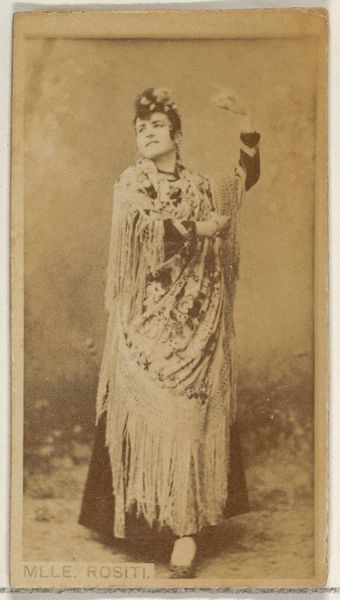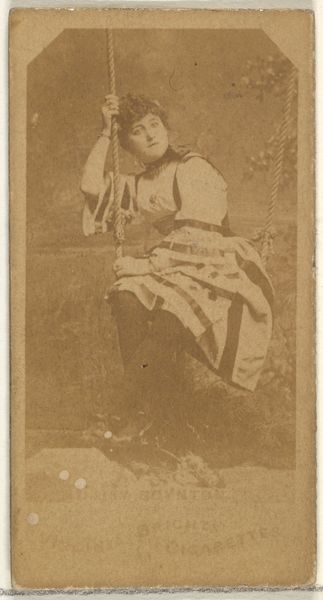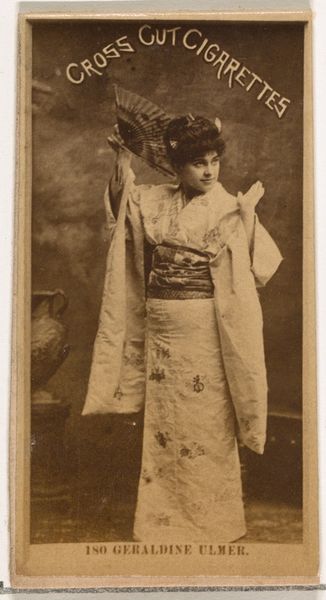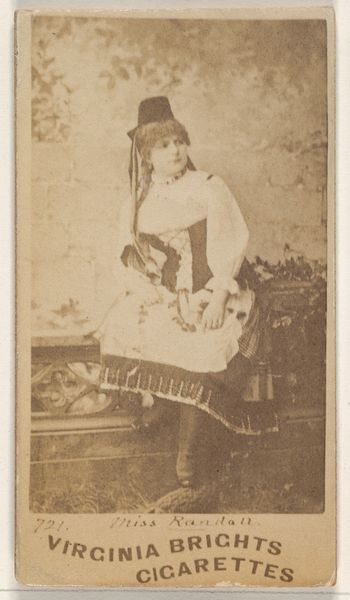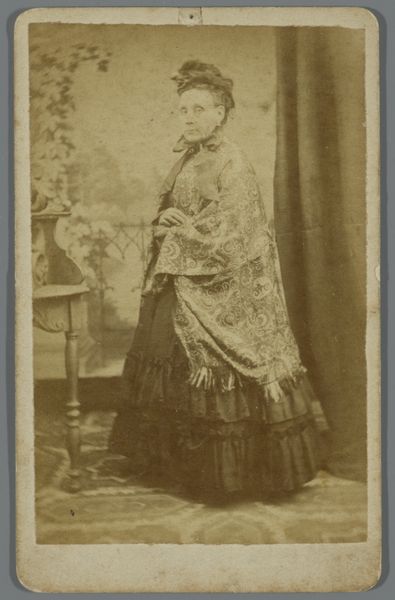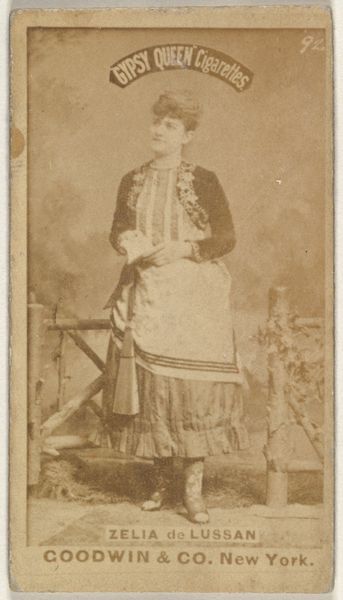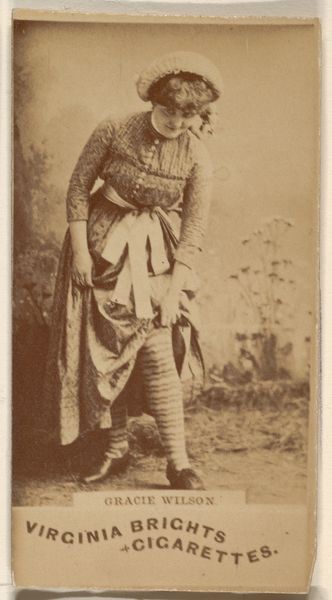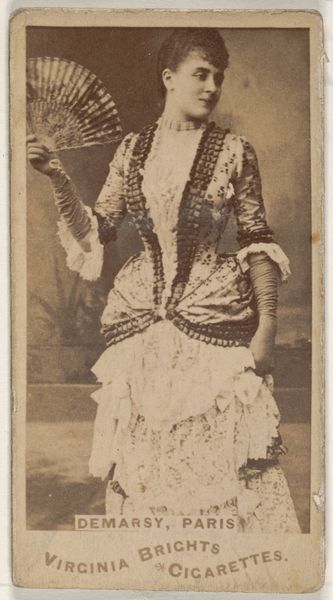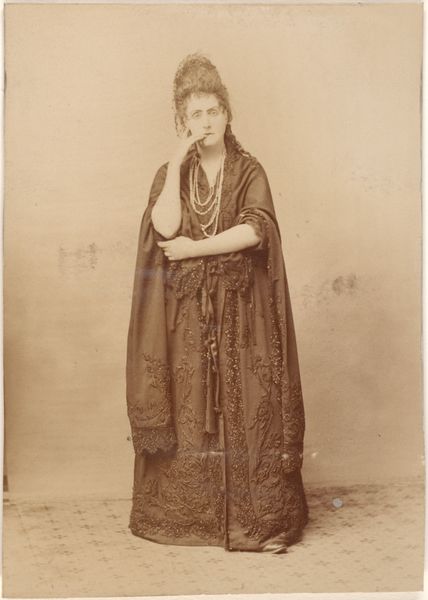
Frankie Kemble, from the Actors and Actresses series (N171) for Gypsy Queen Cigarettes 1886 - 1890
0:00
0:00
#
portrait
# print
Dimensions: sheet: 2 11/16 x 1 3/8 in. (6.9 x 3.5 cm)
Copyright: Public Domain
Curator: This is "Frankie Kemble, from the Actors and Actresses series (N171) for Gypsy Queen Cigarettes," a photograph printed between 1886 and 1890 by Goodwin & Company. Editor: It's captivating, in a rather exoticized way, isn't it? The pose, the kimono...it almost feels like a theatrical performance captured on a card. Curator: Indeed. These cards were actually inserts in cigarette packs, acting as advertisements but also as collectible items. Notice how the production itself elevates popular imagery into something potentially valuable. The material, flimsy card stock, belies its social function as promotional material. Editor: The subject herself, Frankie Kemble, likely posed under the dictates of Goodwin & Company for distribution within Gypsy Queen Cigarettes packaging. This really emphasizes the blurred boundaries between the art world and commerce, where actors and actresses, their likenesses, and even this particular card itself became part of the larger apparatus of branding. And the fad for Japonisme! The social desire that must have fed… Curator: Exactly. The incorporation of the kimono suggests an interest in the fashionable Japonisme movement which saturated society at this point. There's something fascinating in observing how Japanese visual motifs and the burgeoning advertising industry intersected during that period. This card helped to commodify what consumers understood of other cultural identities for sales. Editor: Thinking of art's social presence in the Gilded Age, one imagines tobacco firms commissioning artwork to bolster consumer bases through visual spectacle and celebrity endorsement. The fact it’s housed now in the Metropolitan Museum… How does it recontextualize our perceptions? It's an advertisement treated as a window into 19th-century popular culture and representation, a testament to the power of context. Curator: Yes, it really encourages viewers to reassess art production’s various social forms: its material presence and cultural status. Editor: Agreed, thinking about this intersection really adds more context and perspective.
Comments
No comments
Be the first to comment and join the conversation on the ultimate creative platform.
